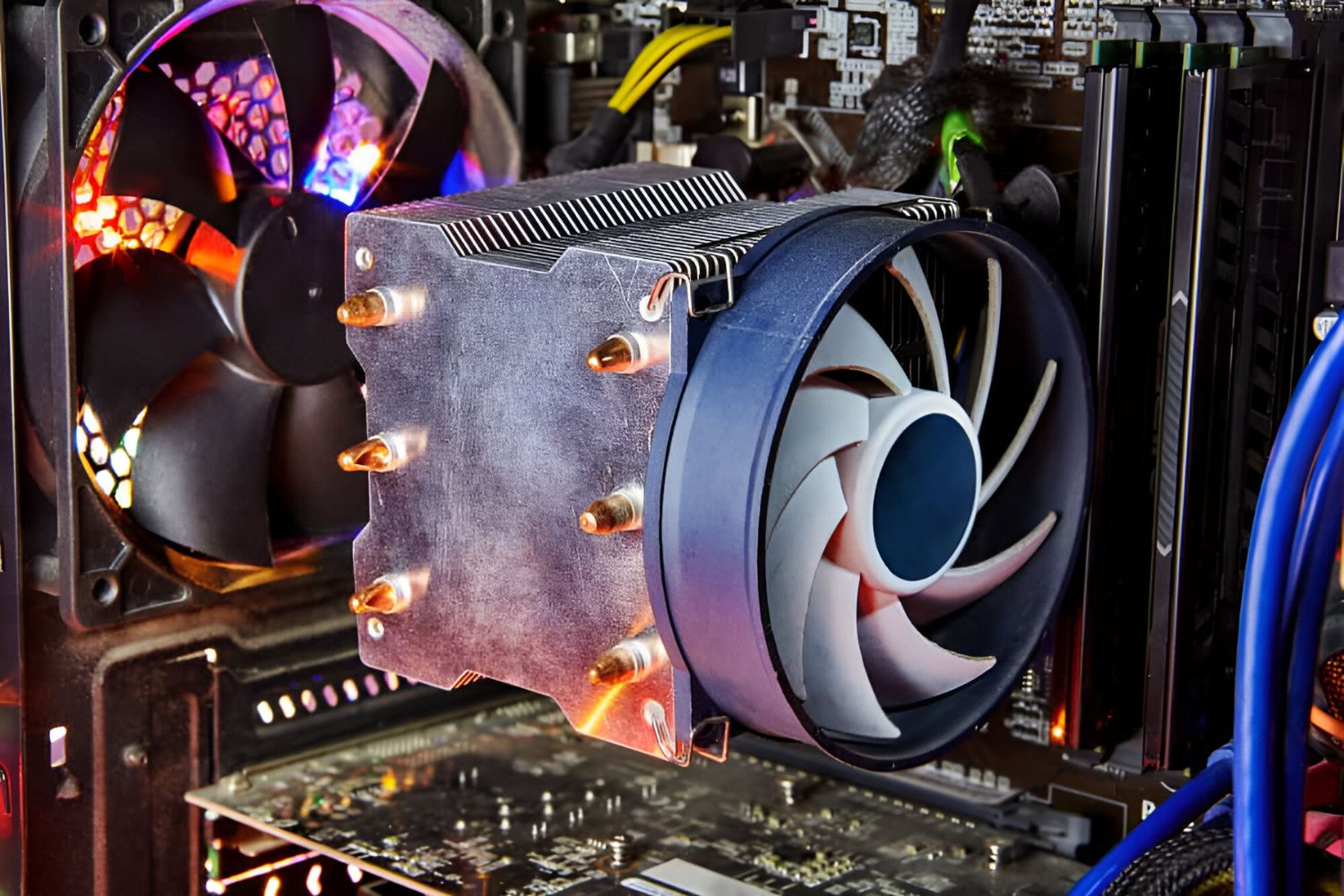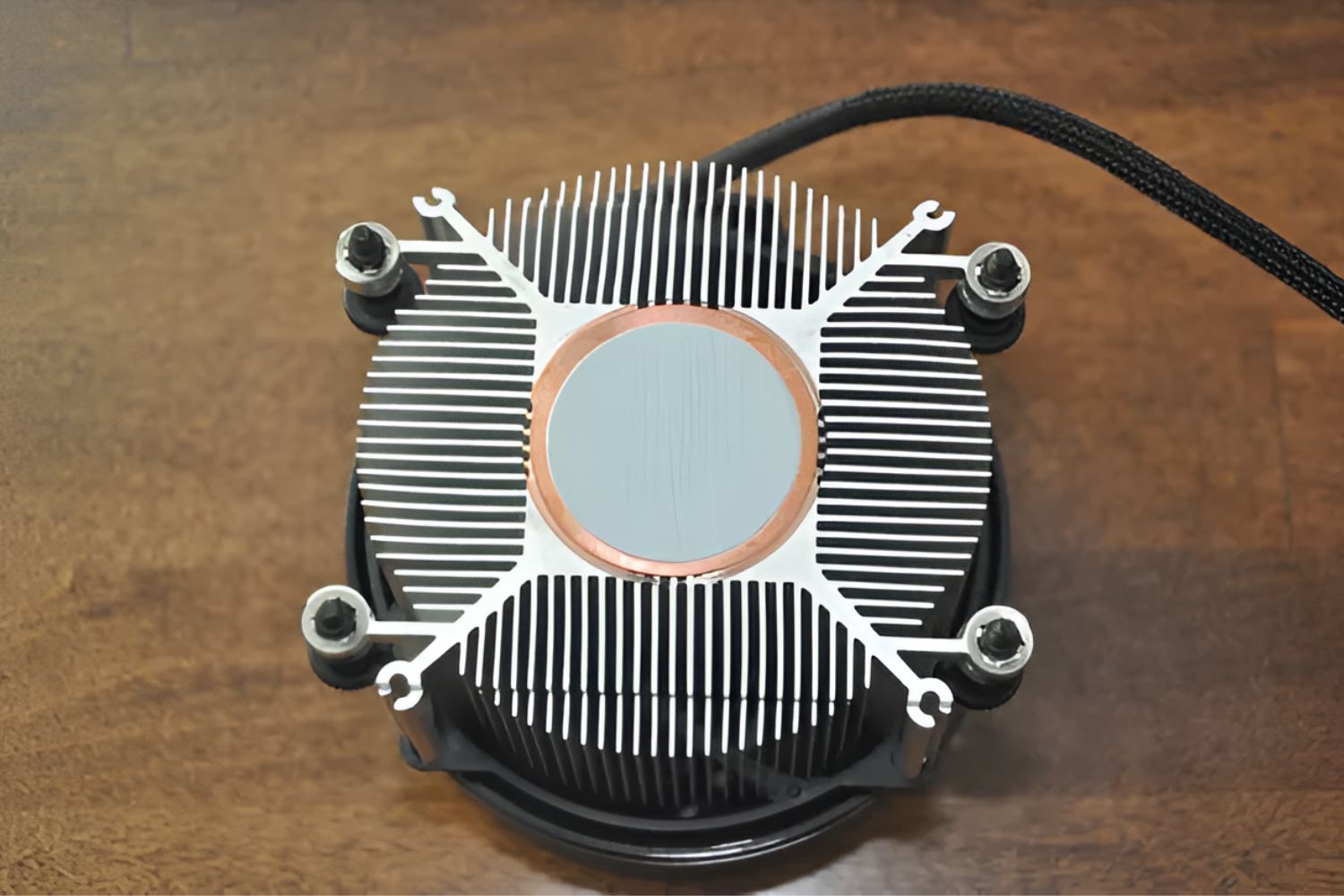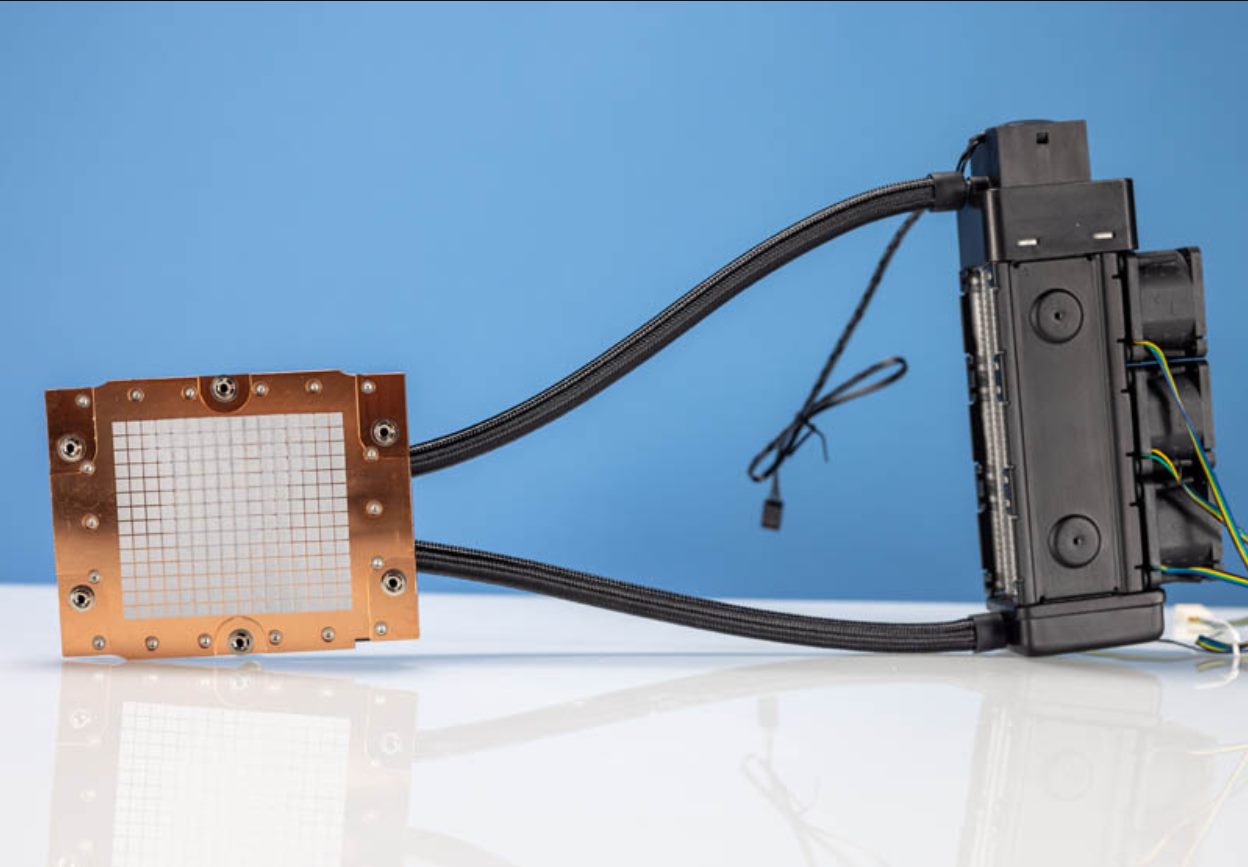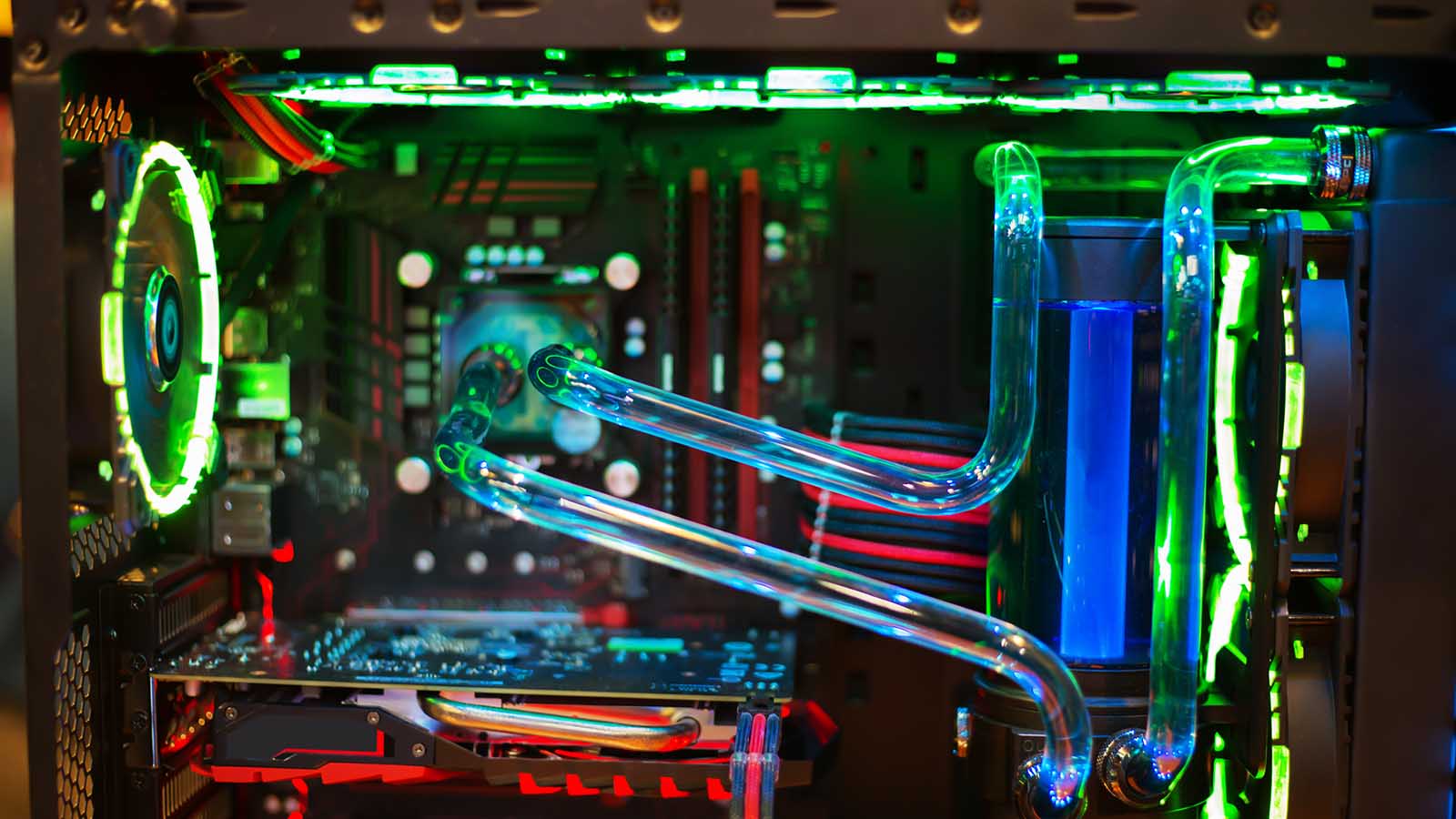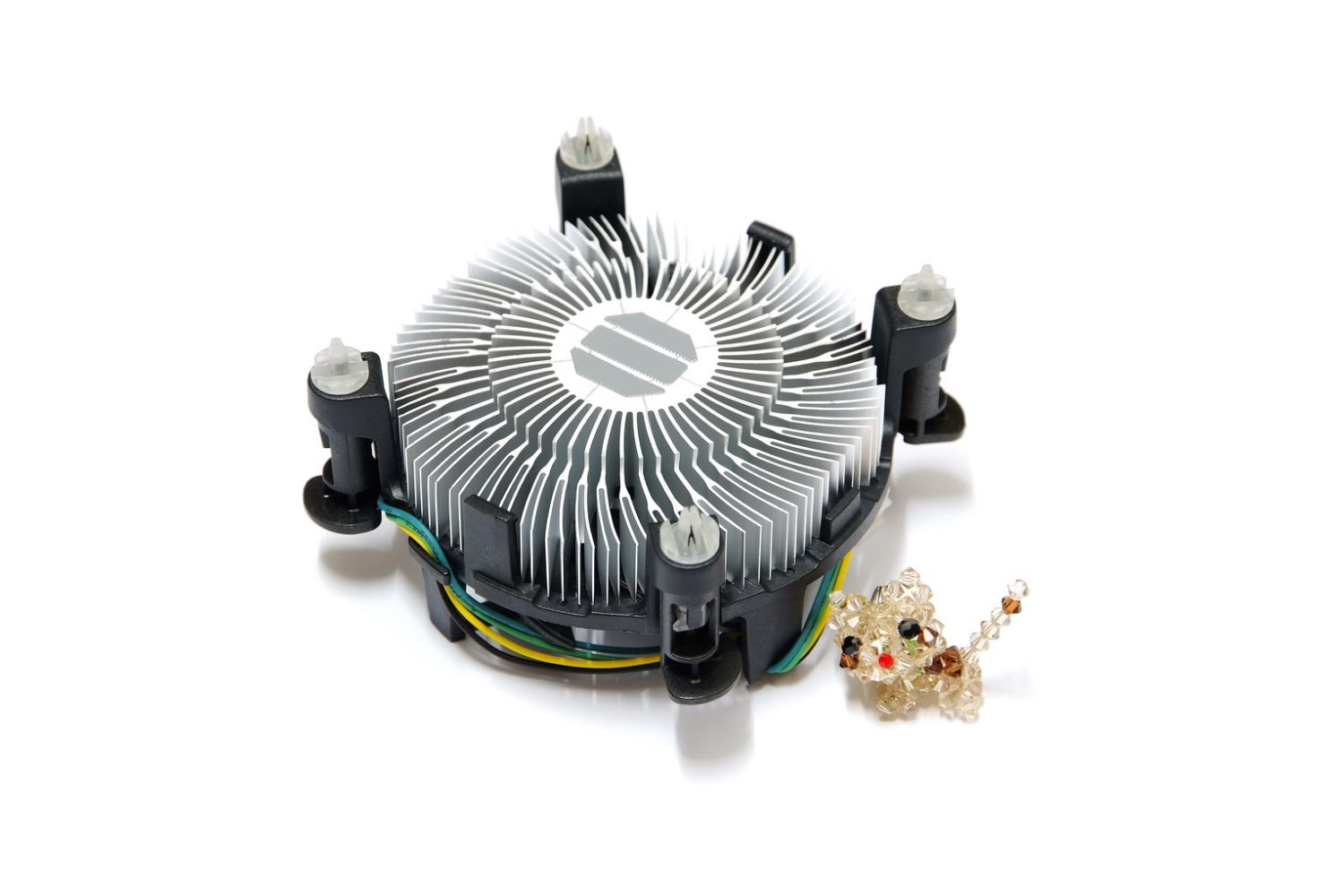Introduction
When it comes to keeping your computer’s CPU cool, having the right CPU cooler is essential. A CPU cooler helps dissipate the heat generated by the processor, preventing it from overheating and causing performance issues. Whether you’re a computer enthusiast looking to upgrade your existing cooler or a beginner trying to identify the CPU cooler in your system, this guide will help you determine what CPU cooler you have.
Identifying your CPU cooler can be useful for several reasons. It allows you to determine the cooling capabilities of your current setup, ensuring that your CPU stays within safe temperature limits during intense tasks. Additionally, knowing your CPU cooler can help in troubleshooting cooling-related issues or when planning an upgrade for better performance.
In this article, we will discuss various methods to identify your CPU cooler, from physical examination and manufacturer documentation to software tools and online research. By using these methods, you can confidently determine the model and specifications of your CPU cooler.
It’s important to note that the specific process of identifying your CPU cooler may vary depending on the make and model of your computer and the cooling solution used. However, the methods discussed here are applicable to a wide range of systems and should provide you with the necessary information to identify your CPU cooler.
So, if you’re ready to uncover the mysteries of your CPU cooler, let’s dive into the different methods you can use to identify what CPU cooler you have!
Ways to Identify Your CPU Cooler
There are several methods you can use to identify your CPU cooler. By combining physical examination, manufacturer documentation, software tools, checking the motherboard, and conducting online research, you can determine the model and specifications of your CPU cooler.
1. Physical Examination: The first and most straightforward method is to visually inspect your CPU cooler. Remove the side panel of your computer case and locate the cooler attached to the CPU. Look for any visible branding, model numbers, or logos on the cooler itself. These markings often contain valuable information that can help you identify the CPU cooler.
2. Manufacturer Documentation: Refer to the documentation or user manual that came with your computer or CPU cooler. This documentation typically includes details about the installed hardware, including the CPU cooler model and specifications. If you don’t have the physical documentation, check the manufacturer’s website for downloadable manuals or support resources.
3. Software Tools: Utilize software tools specifically designed to provide hardware information. Programs like CPU-Z, HWiNFO, and Speccy can give you detailed information about your CPU cooler, including the manufacturer, model, and even temperature readings. Download and install one of these tools and navigate to the CPU or hardware section to find the cooler information.
4. Check the Motherboard: Another way to identify your CPU cooler is by checking the motherboard. The motherboard often has labels or engravings next to the CPU socket indicating compatibility and recommended coolers. These labels may include the model or the type of cooler required for installation. Consult your motherboard’s documentation or visit the manufacturer’s website for specific details.
5. Online Research: If all else fails, you can turn to the vast resources available online. Search for the make and model of your computer or motherboard along with the term “CPU cooler.” This search can lead you to forums, product listings, or reviews that provide information about the stock cooler or recommended coolers for your system.
By combining these methods, you can successfully identify your CPU cooler and gather all the necessary details for troubleshooting or future upgrades. Remember to take note of the model, manufacturer, and specifications of your CPU cooler for accurate identification and compatibility purposes.
Method 1: Physical Examination
One of the simplest methods to identify your CPU cooler is through a physical examination. This method involves visually inspecting the cooler and looking for any visible markings or labels that provide information about its model and specifications.
To begin, first, power off your computer and unplug it from the power source. Remove the side panel of your computer case to gain access to the internals. Locate the CPU cooler, which is typically mounted on top of the CPU.
Examine the CPU cooler for any visible branding, model numbers, or logos. These markings are often present on the top or sides of the cooler. Look for the manufacturer’s name, such as Cooler Master, Noctua, or Corsair, as well as any model numbers or series names.
In some cases, the cooler may have a sticker or label with detailed information, including the model, part number, and even the specifications like fan speed and airflow. Make a note of these details as they can be useful later for troubleshooting or identifying compatibility with other components.
Once you have identified any markings or labels on the CPU cooler, conduct a quick online search using the manufacturer’s name and the model number or series. This can provide additional information, such as specific specifications, compatibility, and potential upgrades or alternatives.
If you are unable to locate any visible markings on the CPU cooler or if the cooler does not have any branding, it may be a stock cooler that came bundled with your computer or CPU. In this case, you can try identifying the CPU model itself to gather information about the stock cooler. Software tools, such as CPU-Z or HWiNFO, can provide detailed CPU information and help you determine the cooler model associated with your specific CPU.
Remember, physical examination is a straightforward method, but it may not always yield precise results. Some coolers may have markings that are difficult to decipher or may not have any visible branding at all. In such cases, you may need to use alternative methods, such as checking the manufacturer documentation or using software tools, to identify your CPU cooler accurately.
Method 2: Manufacturer Documentation
Another reliable method to identify your CPU cooler is by referring to the manufacturer’s documentation that came with your computer or the cooler itself. This method is especially useful if you have the original user manual or product specifications.
Start by searching for the documentation or user manual that accompanied your computer or CPU cooler. These documents often contain detailed information about the installed hardware, including the CPU cooler model, make, and specifications. Look for sections or chapters related to cooling solutions or hardware components.
If you have misplaced the physical documentation, don’t worry. Most manufacturers provide digital copies of user manuals and product documentation on their official websites. Visit the manufacturer’s website and navigate to the support or downloads section. Look for your specific model or product and download the corresponding user manual or documentation.
Once you have the documentation, search for relevant information about the CPU cooler. Look for the model name or number, specifications such as dimensions, fan speed, and compatibility details. Some manuals may also provide additional tips and instructions for installing or optimizing the cooler.
If you are unable to find the exact model or information about your CPU cooler in the documentation, you can still gather valuable insights. Manufacturers often provide compatible accessory lists or recommended coolers for specific motherboard models or CPU sockets. Check these sections for any recommendations or compatibility notes that can help narrow down the possibilities.
In case the documentation does not provide sufficient details or you are unable to find the required information, consider reaching out to the manufacturer’s customer support. They often have knowledgeable representatives who can assist you in identifying your CPU cooler based on the make and model of your computer or provide more specific guidance for your situation.
By utilizing the manufacturer’s documentation, whether in physical or digital form, you can gather accurate information about your CPU cooler. This method ensures reliability and eliminates any guesswork in identifying the model, make, and specifications of your CPU cooler.
Method 3: Software Tools
Using software tools specifically designed to provide hardware information is another effective method to identify your CPU cooler. These tools can give you detailed insights into your system’s components, including the manufacturer, model, and specifications of your CPU cooler.
There are several popular software tools available that can assist in identifying your CPU cooler, such as CPU-Z, HWiNFO, and Speccy. These tools are free to download and easy to use.
To begin, visit the respective website of the software tool you wish to use and download the latest version. Install the software on your computer and launch it. Once opened, navigate to the CPU or hardware section, where you can find information related to your CPU and cooling solution.
In CPU-Z, for example, the main window presents detailed information about your processor, and you can go to the “Cooling” tab to access details about your CPU cooler. The software will display the manufacturer, model, fan speed, and other relevant specifications.
HWiNFO and Speccy offer similar functionalities. In HWiNFO, you can explore the “Sensors” tab and look for the CPU cooler-related information. Speccy, on the other hand, provides a summary of your system’s hardware, including the CPU cooler information, on its main screen.
These software tools not only provide information about your current CPU cooler but also monitor real-time temperature readings, fan speeds, and other vital details. Monitoring these stats can help you assess the performance and effectiveness of your CPU cooler in maintaining optimal operating temperatures.
Remember to make note of the provided information, including the cooler model and specifications, as it will be helpful for future reference or when considering an upgrade or compatibility with other components.
By leveraging software tools like CPU-Z, HWiNFO, or Speccy, you can easily identify your CPU cooler and gain valuable insights into its manufacturer, model, and specifications. These tools provide a convenient and reliable way to gather accurate information about your cooling solution.
Method 4: Check the Motherboard
An alternative method to identify your CPU cooler is by checking the motherboard itself. The motherboard often has labels or engravings near the CPU socket that indicate compatibility and recommended coolers. By examining the motherboard, you can gather valuable information about the type of cooler required for your system.
To begin, power off your computer and unplug it from the power source. Open the computer case and locate the motherboard, which is usually the largest circuit board inside the case.
Look for labels or engravings near the CPU socket. These labels may contain information about compatible coolers or provide specifications required for the installation of a CPU cooler. Check for any model numbers, recommended cooler brands, or specific cooler types mentioned on the motherboard.
If you are unable to find explicit details, consult the documentation or specifications of your motherboard. These documents are often available in physical form or can be accessed through the manufacturer’s website. Look for any cooler-related information, including compatibility lists, recommended coolers, or instructions for installing a cooler.
If you have already installed a CPU cooler, examine its mounting mechanism and compare it to the information provided by the motherboard. Some motherboards have specific mounting brackets or screw hole patterns that are compatible with certain CPU cooler models or brands.
In case the motherboard does not provide specific details, you can still use the information you gather to conduct further online research. Searching for the motherboard model along with the term “CPU cooler” can often lead you to user forums, product listings, or reviews that provide insights into compatible coolers or recommended solutions for your system.
By checking the motherboard, you can gather valuable information about the recommended coolers and compatible solutions for your system. These details will help you narrow down the options when searching for a suitable CPU cooler or when troubleshooting compatibility issues.
Method 5: Online Research
When all else fails, turning to online resources is a valuable method to identify your CPU cooler. Conducting online research can provide you with various insights, recommendations, and specifications related to your specific CPU cooler.
Start by searching the make and model of your computer or motherboard along with the term “CPU cooler” in your preferred search engine. This search can lead you to forums, product listings, or reviews where users discuss and share information about compatible coolers or the OEM coolers that come with their systems.
Forums dedicated to computer hardware, such as Reddit’s r/buildapc or Tom’s Hardware, are excellent sources of information. Look for threads or discussions related to your specific computer or motherboard model, as users often share their experiences and recommendations regarding CPU coolers.
Product listings and reviews on popular e-commerce platforms like Amazon, Newegg, or PCPartPicker can also provide insights into compatible coolers for your CPU or specific system models. Look for listings or reviews for your computer or motherboard model, and check if they mention the stock cooler or compatible aftermarket options.
When conducting online research, pay attention to any specific information provided by users or reviewers. They may mention the model, make, or specifications of the CPU cooler that comes with the system or recommend alternative coolers based on their experiences.
In addition to forums and e-commerce platforms, visit the websites of major CPU cooler manufacturers. They often have compatibility tools or resources that allow you to search for your specific PC model or motherboard and provide recommendations for compatible coolers.
Remember to cross-reference the information you gather from different sources to ensure accuracy and reliability. Sometimes, conflicting user opinions or outdated information can lead to confusion. Focus on the most recent and consistently mentioned details.
By conducting thorough online research, you can gather valuable information about your CPU cooler, including compatibility, performance, and alternative options. This method allows you to tap into the knowledge and experiences shared by the online community and make informed decisions regarding your CPU cooler.
Conclusion
Identifying your CPU cooler is crucial for maintaining optimal performance and ensuring that your CPU stays within safe temperature limits. Through the various methods discussed in this article, you can confidently determine the model, make, and specifications of your CPU cooler.
Physical examination allows you to visually inspect the cooler for any visible branding or labels, providing valuable information about the cooler. Checking the manufacturer documentation, whether in physical or digital form, can provide detailed insights into the cooler model and specifications, as well as compatibility information.
Utilizing software tools like CPU-Z, HWiNFO, or Speccy allows you to gather comprehensive hardware information, including your CPU cooler’s manufacturer, model, and specifications. Checking the motherboard can provide compatibility information and recommended coolers, relying on labels or engravings near the CPU socket.
When all else fails, online research becomes a valuable resource, enabling you to explore user forums, product listings, and reviews to gather insights, recommendations, and specifications related to your specific CPU cooler.
By combining these methods, you can confidently determine what CPU cooler you have and gather all the necessary details for troubleshooting, optimizing, or upgrading your cooling solution.
Remember to take note of the information you gather, including the model, manufacturer, and specifications of your CPU cooler. This information will serve as a handy reference for future upgrades, compatibility checks with other components, or troubleshooting cooling-related issues.
Stay vigilant in keeping your CPU cool, ensuring optimal performance and long-term stability for your system. Whether you’re a seasoned computer enthusiast or a beginner, knowing what CPU cooler you have is essential knowledge for maintaining the health and performance of your system.







